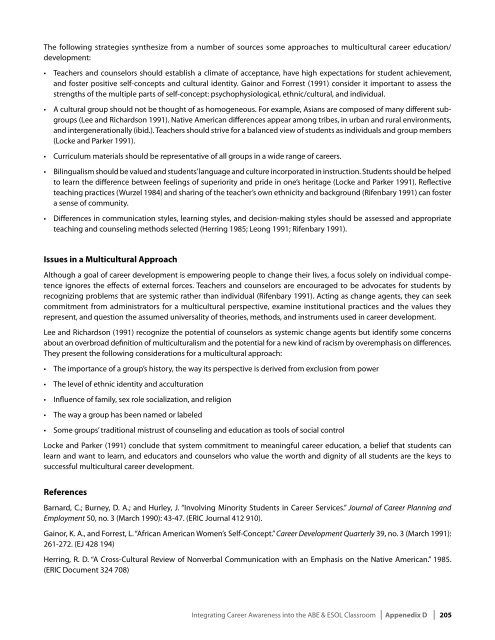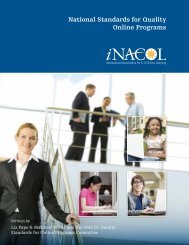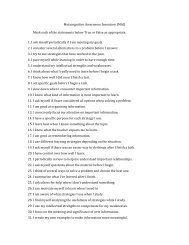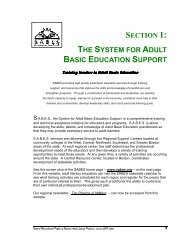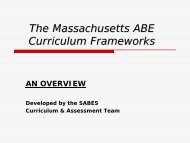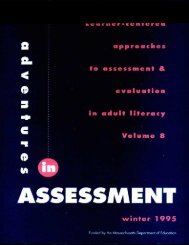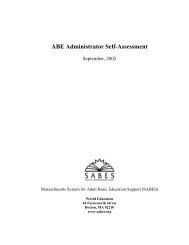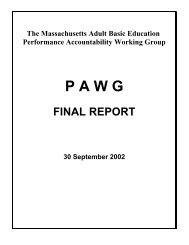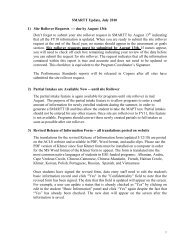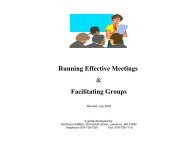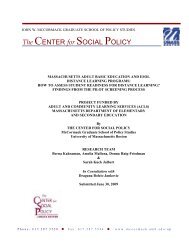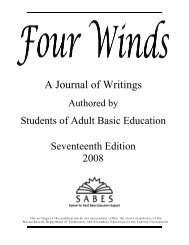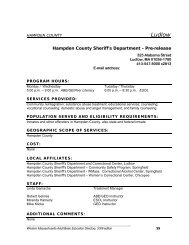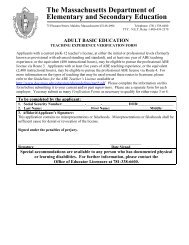Integrating Career Awareness into the ABE/ESOL Classroom - SABES
Integrating Career Awareness into the ABE/ESOL Classroom - SABES
Integrating Career Awareness into the ABE/ESOL Classroom - SABES
- No tags were found...
You also want an ePaper? Increase the reach of your titles
YUMPU automatically turns print PDFs into web optimized ePapers that Google loves.
The following strategies syn<strong>the</strong>size from a number of sources some approaches to multicultural career education/<br />
development:<br />
• Teachers and counselors should establish a climate of acceptance, have high expectations for student achievement,<br />
and foster positive self-concepts and cultural identity. Gainor and Forrest (1991) consider it important to assess <strong>the</strong><br />
strengths of <strong>the</strong> multiple parts of self-concept: psychophysiological, ethnic/cultural, and individual.<br />
• A cultural group should not be thought of as homogeneous. For example, Asians are composed of many different subgroups<br />
(Lee and Richardson 1991). Native American differences appear among tribes, in urban and rural environments,<br />
and intergenerationally (ibid.). Teachers should strive for a balanced view of students as individuals and group members<br />
(Locke and Parker 1991).<br />
• Curriculum materials should be representative of all groups in a wide range of careers.<br />
• Bilingualism should be valued and students’ language and culture incorporated in instruction. Students should be helped<br />
to learn <strong>the</strong> difference between feelings of superiority and pride in one’s heritage (Locke and Parker 1991). Reflective<br />
teaching practices (Wurzel 1984) and sharing of <strong>the</strong> teacher’s own ethnicity and background (Rifenbary 1991) can foster<br />
a sense of community.<br />
• Differences in communication styles, learning styles, and decision-making styles should be assessed and appropriate<br />
teaching and counseling methods selected (Herring 1985; Leong 1991; Rifenbary 1991).<br />
Issues in a Multicultural Approach<br />
Although a goal of career development is empowering people to change <strong>the</strong>ir lives, a focus solely on individual competence<br />
ignores <strong>the</strong> effects of external forces. Teachers and counselors are encouraged to be advocates for students by<br />
recognizing problems that are systemic ra<strong>the</strong>r than individual (Rifenbary 1991). Acting as change agents, <strong>the</strong>y can seek<br />
commitment from administrators for a multicultural perspective, examine institutional practices and <strong>the</strong> values <strong>the</strong>y<br />
represent, and question <strong>the</strong> assumed universality of <strong>the</strong>ories, methods, and instruments used in career development.<br />
Lee and Richardson (1991) recognize <strong>the</strong> potential of counselors as systemic change agents but identify some concerns<br />
about an overbroad definition of multiculturalism and <strong>the</strong> potential for a new kind of racism by overemphasis on differences.<br />
They present <strong>the</strong> following considerations for a multicultural approach:<br />
• The importance of a group’s history, <strong>the</strong> way its perspective is derived from exclusion from power<br />
• The level of ethnic identity and acculturation<br />
• Influence of family, sex role socialization, and religion<br />
• The way a group has been named or labeled<br />
• Some groups’ traditional mistrust of counseling and education as tools of social control<br />
Locke and Parker (1991) conclude that system commitment to meaningful career education, a belief that students can<br />
learn and want to learn, and educators and counselors who value <strong>the</strong> worth and dignity of all students are <strong>the</strong> keys to<br />
successful multicultural career development.<br />
References<br />
Barnard, C.; Burney, D. A.; and Hurley, J. “Involving Minority Students in <strong>Career</strong> Services.” Journal of <strong>Career</strong> Planning and<br />
Employment 50, no. 3 (March 1990): 43-47. (ERIC Journal 412 910).<br />
Gainor, K. A., and Forrest, L. “African American Women’s Self-Concept.” <strong>Career</strong> Development Quarterly 39, no. 3 (March 1991):<br />
261-272. (EJ 428 194)<br />
Herring, R. D. “A Cross-Cultural Review of Nonverbal Communication with an Emphasis on <strong>the</strong> Native American.” 1985.<br />
(ERIC Document 324 708)<br />
<strong>Integrating</strong> <strong>Career</strong> <strong>Awareness</strong> <strong>into</strong> <strong>the</strong> <strong>ABE</strong> & <strong>ESOL</strong> <strong>Classroom</strong> | Appenedix D | 205


